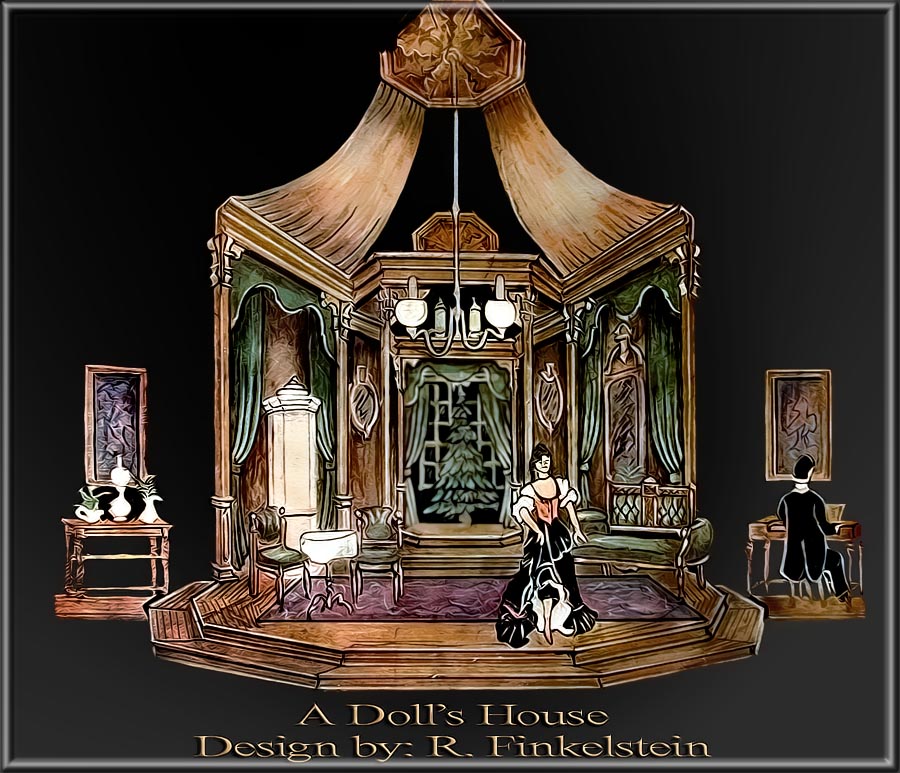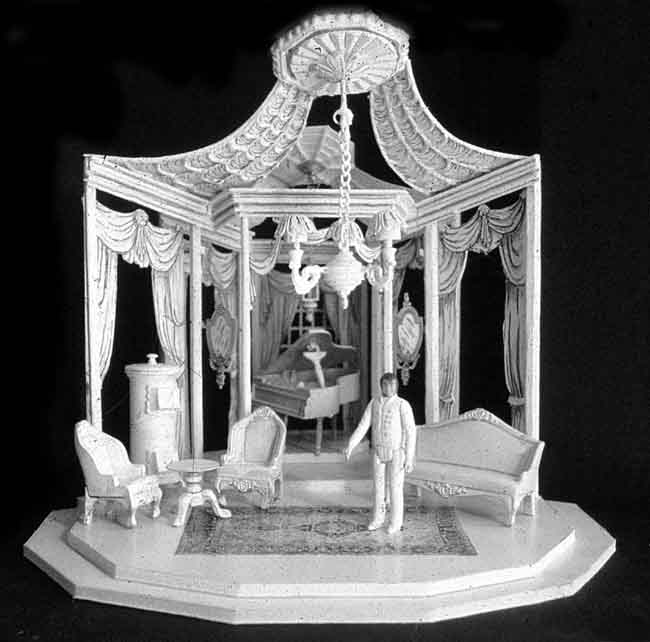|
|
A Doll's House -
Scenery design by Richard Finkelstein. Direction by Ed Lange
Depicted is the rendering and the
white model


|
A Doll�s House
(scenery design)
Context/Pretext:
This production was presented in one of the world�s most unusual
formal theatre spaces, The Kitty Carlisle Hart Theatre in "The
Egg" in Albany, New York. The Egg itself was, when built, part of
the largest construction project in American history, the billion
dollar Nelson A Rockefellar, Empire State Plaza. The Hart theatre is
one of two performing arts spaces in the $100,000,000 (1960s money)
Egg. Although I was the inaugural technical director of the facility,
this was my first design in the Hart Theatre.
Many features make this space unique. The entirety of the behind
the proscenium area, for instance, is part of an extremely elaborate
elevator system that descends, rigging, lighting, and all, 10 stories
below the stage, to the shop area. This elevator system serves both
the Hart stage, seating 400, and it�s larger twin, the 1,000 seat
main theatre. The elevator system alone took 13 years to build.
Intended originally as a recital hall, the space has very unusual
proportions. The proscenium, for instance is much taller than it is
wide, while the width itself is very narrow. As the main stage proper
is within an elevator shaft, there is no wing space at all. There is a
substantial apron area but the stage is awkwardly divided between
apron and behind the proscenium areas. The sight lines are extreme,
with the audience wrapping about 120 degrees around the apron. The
space, empty of scenery, looks to be very tiny. It is a challenge to
design in for straight theatre performance.
Description:
The setting consisted of a series of low, tiered platforms, painted
using FEV techniques to simulate polished wood. Overhead, were two
rosettes in perspective, to which fabric draped ceiling panels were
attached. Walls of the Helmer House were only indicated by a series of
posts, floating cornices, open window units and decorative fabric. The
wood was all stained poplar, built in perspective, with Scandinavian
architectural features. Within the wall areas down stage, there were
also decorative mirrors that were carefully placed in angle so as to
reflect images of the actors as though they were in a kaleidoscope,
without projecting distracting reflections into the audience area.
Furnishings were all period antiques including an 1840s working piano
which was used through the run of the production. The audience seating
was never farther from the stage than about ten feet so attention to
detail in construction, decoration, and furnishing was very important.
|
|